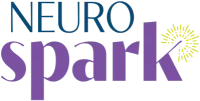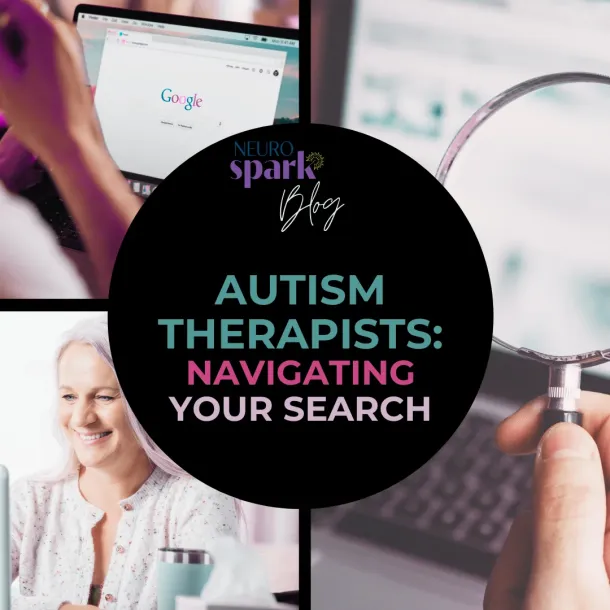Types of Autism: Understanding the Changes in the DSM

Table of Contents:
What is Autism?
Autism is a lifelong neurological and developmental condition. While commonly diagnosed in childhood, many adults discover they are autistic later in life, often after researching the different types of autism and how the autism spectrum works. There are autistic people of all races, gender identities, ethnicities, and socioeconomic backgrounds. It is a neurological and developmental condition that is typically diagnosed in childhood but can go misdiagnosed or undiagnosed into adolescence and adulthood. An estimated 1 in 36 American children and 2% of American adults have been diagnosed as autistic.
Types of Autism (According to the DSM-IV)
Autism can manifest in a variety of ways, and presentations vary between individuals. This wide range is why autism is understood and described as a spectrum. Prior versions of the Diagnostic and Statistical Manual (DSM) included four separate diagnoses under what is now classified as autism spectrum disorder. Those diagnoses included Autistic Disorder, Asperger’s Syndrome, Childhood Disintegrative Disorder, and Pervasive Developmental Disorder – not otherwise specified. In 2013, the American Psychiatric Association (APA) revised the DSM and changed the criteria and conceptualization of autism.
Before the 2013 revision, the four separate diagnoses of autism and autism-related conditions were made based on specific sets of symptoms. The DSM-4 classification of the four subtypes of autism included:
Autistic Disorder
The diagnosis of Autistic Disorder in the DSM-4 required at least two “social impairment” symptoms, at least one “communication impairment” symptom, and at least six total symptoms from those categories.
Asperger’s Syndrome
Prior to 2013, Asperger’s syndrome was used to describe autism. According to the DSM-IV, someone could be diagnosed with Asperger’s if they had “at least two symptoms of social interaction impairment and at least one symptom of restricted, repetitive behavior.” Asperger’s was often used to describe autistic people who did not have accompanying linguistic or cognitive impairment. Asperger’s syndrome most likely tracks with how the DSM-5-TR currently describes autistic people with level 1 support needs.
Childhood Disintegrative Disorder (CDD)
Child disintegrative disorder is a diagnosis characterized by developmental delays occurring after age 3, when a child loses their previously acquired communication, social, and motor skills.
Pervasive Developmental Disorder – Not Otherwise Specified (PDD-NOS)
This condition was a catchall for signs of autism that did not fit neatly into one of the other types of autism.
DSM-5 and the Autism Spectrum
In the DSM-5, these separate diagnoses became part of what is referred to as the autism spectrum. The DSM-5 also introduced criteria for determining “severity levels” to distinguish the extent of support needs.
Autism Support Levels in the DSM-5
Level 1
Level 1 is “requiring support.” Autistics at this level can typically live independently or near independently, although they still experience notable difficulties that should not be brushed off. Level 1 autistics can often benefit from occupational or academic accommodations and trusted people (family, friends, or professionals) who can give them support as needed in certain areas. At times, they will still struggle with high social demands, transitions, or other situations that may be dysregulating for them. They can and do experience social, communication, and sensory challenges and may need more or less help at different times. (Their support can be thought of as “as needed.”)
Level 2
Level 2 is “requiring substantial support.” Autistics who require level 2 support may benefit from regular care and support. They can be semi-independent yet still benefit from daily (or near-daily) assistance in certain areas. Every autistic person’s needs are different and vary based on the person’s strengths and differences. Generally, level 2 support means that despite their difficulties being “substantial,” constant assistance is not indicated. (Their support can be thought of as “part-time.”)
Level 3
Level 3 is “requiring very substantial support.” Autistics who require level 3 support typically need significant, continuous care and support with most aspects of their daily living. This could mean many things, ranging from needing help with basic self-care tasks to staying safe to having designated people make care decisions for you. Level 3 support needs can mean they may have an appointed guardian and may be cared for full-time by their families or reside in residential settings. (Their support can be thought of as “full-time.”)
Why Functioning Labels Are Harmful
You may have heard terms like “high-functioning” or “low-functioning” used to describe autistic people. These labels are still common in everyday language, even though they’re not part of current diagnostic criteria and are widely rejected by the autistic community.
Functioning labels are:
- Overly simplistic and fail to reflect day-to-day variability
- Ableist, often dismissing real support needs or independence
- Harmful, because they reduce a person’s experience to one narrow lens
For example, someone labeled “high-functioning” may still struggle with executive functioning, sensory overwhelm, or burnout, but those challenges get dismissed. On the flip side, someone labeled “low-functioning” may be deeply insightful, creative, and autonomous in ways that the label erases.
The reality is that support needs fluctuate. Autism isn’t a straight line from “more” to “less.” It’s a complex, non-linear spectrum of traits, experiences, and challenges. That’s why we avoid labels and instead focus on describing each person as a whole human with their strengths, needs, preferences, and lived experience at the center.
Key Takeaways
- Autism is a spectrum, not a single experience.
- DSM-5 replaced outdated labels with a spectrum-based model.
- Support levels vary across individuals and are not fixed.
- NeuroSpark Health offers affirming evaluations and support.
How NeuroSpark Health Can Support You
At NeuroSpark Health, we know that every autistic adult is unique. Whether you’ve been recently diagnosed or are still exploring the possibility, we’re here to offer affirming, identity-conscious support, not labels or judgment.
We provide:
- Virtual autism assessments for adults in most U.S. states
- Neurodivergent-affirming therapy
- One-on-one coaching for clarity, growth, and real-world strategies
- Accommodations consulting to help you thrive at work, school, or home
👉 Contact our team today to learn more or to schedule your free 15-minute consultation.
Want to learn more about how autism shows up in adults?
Check out our blog: 5 Overlooked Autism Characteristics in Adults.

Dani Rodwell, LCSW
One Spark Can Light a Fire
Diagnosis can be the catalyst for significant momentum. It can represent a turning point for your life, where you can move forward equipped with new knowledge about yourself and a new framework to guide you in your journey.
A formal assessment provides an incredible opportunity to gain knowledge about who you are and how you see the world.



